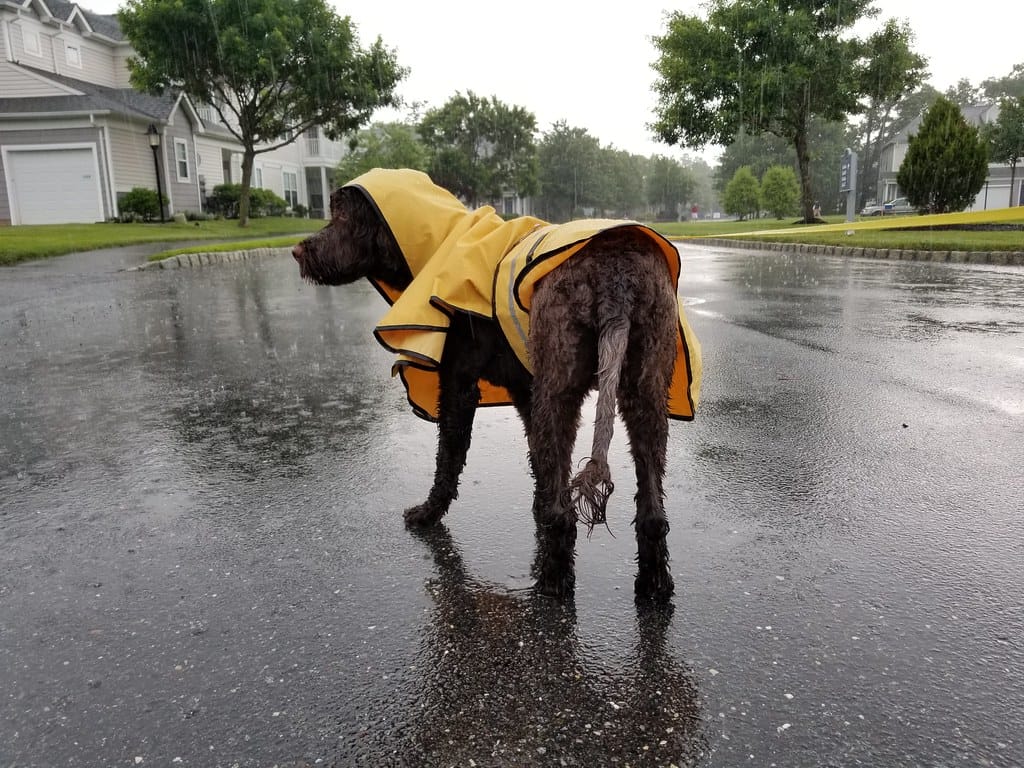The Portuguese Water Dog is a breed that has gained popularity in recent years, thanks in part to former President Barack Obama's choice of the breed as a family pet. However, many people are still unfamiliar with the origins of this unique and intelligent breed. The Portuguese Water Dog, as its name suggests, originated in Portugal and has a long history of working alongside fishermen to retrieve fishing nets and lost gear.

The exact origins of the Portuguese Water Dog are difficult to trace, but it is believed that the breed has been around for at least several hundred years. The breed was primarily used by fishermen in the coastal regions of Portugal, where they would swim out to sea to retrieve nets and other lost items. Over time, the breed evolved to become an excellent swimmer and diver, with a thick, waterproof coat that protected them from the cold ocean water. Despite their usefulness to fishermen, the breed was relatively unknown outside of Portugal until the mid-twentieth century.
Historical Origin and Development
The Portuguese Water Dog, or PWD, is a breed that has a rich history in Portugal. This section will explore the historical roots of the breed, its role in Portuguese fishing communities, and its recognition by kennel clubs.
Ancient Roots in Portugal
The PWD has a long history in Portugal, dating back to at least the 13th century. The breed was originally used by Portuguese fishermen to help with their work. The dogs would swim out to sea and retrieve fish that had fallen off the hooks or nets. They were also used to carry messages between boats and to guard the boats when they were docked.
Role in Portuguese Fishing Communities
The PWD played an important role in Portuguese fishing communities for centuries. They were highly valued for their swimming ability, intelligence, and loyalty. In fact, some fishermen believed that the dogs had supernatural powers and would protect them from harm.
Recognition by Kennel Clubs
The PWD was first recognized by the American Kennel Club (AKC) in 1984. This recognition helped to bring the breed to the attention of dog lovers around the world. Today, the PWD is a popular breed in many countries, including the United States.
One of the most important figures in the development of the modern PWD was Vasco Bensaude, a Portuguese businessman who was passionate about the breed. Bensaude worked tirelessly to breed and promote the PWD, and his efforts helped to establish the breed as we know it today.
In conclusion, the Portuguese Water Dog has a fascinating history that is closely tied to the fishing communities of Portugal. Its intelligence, loyalty, and swimming ability have made it a beloved breed around the world.

Breed Characteristics
Physical Description
The Portuguese Water Dog, also known as Cão de Ãgua in Portuguese, is a medium-sized dog breed that stands about 17 to 23 inches tall and weighs between 35 and 60 pounds. They have a muscular and well-proportioned body with a broad chest, straight back, and a slightly curved tail. Their head is well-shaped, with a prominent stop and a long muzzle. They have dark, round eyes and a black nose.
Coat and Color Variations
The Portuguese Water Dog has a thick, curly, and non-shedding coat that comes in three varieties: curly, wavy, and long wavy. The coat is usually black, white, or brown, but it can also be a combination of these colors. The curly coat is the most common, and it requires regular grooming to prevent matting and tangling.
Temperament and Personality
The Portuguese Water Dog is a friendly, intelligent, and loyal breed. They are known for their love of water and their excellent swimming abilities. They are also highly trainable and enjoy learning new tricks and commands. They make great family pets and are good with children and other pets. They have a protective nature and will bark to alert their owners of any potential danger.
Exercise and Energy Levels
The Portuguese Water Dog is an active breed that requires daily exercise and mental stimulation. They enjoy swimming, hiking, and playing fetch. They have a high energy level and need plenty of space to run and play. They are not well-suited for apartment living and require a large yard or access to open spaces. Regular exercise and playtime are essential to keep them healthy and happy.

Health and Care
Common Health Issues
Like all dogs, Portuguese Water Dogs are prone to certain health issues. Some of the most common health problems seen in this breed include hip dysplasia, progressive retinal atrophy, and juvenile dilated cardiomyopathy. Hip dysplasia is a condition where the hip joint does not develop correctly, leading to arthritis and pain. Progressive retinal atrophy is a degenerative eye disease that can cause blindness. Juvenile dilated cardiomyopathy is a heart condition that can cause sudden death in young dogs.
Grooming Needs
Portuguese Water Dogs have a single-layered coat that is curly or wavy and does not shed much. However, their coat requires regular grooming to prevent matting and to keep it healthy. They should be brushed at least once a week and trimmed every few months. Bathing should be done as needed, but not too frequently to avoid drying out the skin. Regular ear cleaning is also important to prevent infections.
Diet and Nutrition
A healthy diet is essential for the overall well-being of Portuguese Water Dogs. They require a balanced diet that is high in protein and low in fat. It is recommended to feed them high-quality dog food that is specifically formulated for their breed and age. Treats should be given in moderation to avoid overfeeding. Fresh water should be available at all times.
Storage Disease
Portuguese Water Dogs are also prone to a genetic disease called storage disease, which is caused by a deficiency in an enzyme called alpha-galactosidase. This disease can cause liver and kidney damage, and can be fatal if left untreated. It is important to have regular check-ups with a veterinarian to catch this disease early and to manage it appropriately.
In conclusion, Portuguese Water Dogs are generally healthy dogs with a few common health issues to watch out for. They require regular grooming and a balanced diet to maintain their health and well-being. It is important to be aware of the potential health issues and to have regular check-ups with a veterinarian to catch any problems early.

Training and Activities
Training for Obedience and Agility
Portuguese Water Dogs are intelligent and trainable, making them great candidates for obedience and agility training. They respond well to positive reinforcement techniques, such as clicker training and rewards-based training. It is important to start training at a young age to establish good habits and prevent bad ones from forming.
Obedience training is important for all dogs, and Portuguese Water Dogs are no exception. They can be strong-willed and independent, so it is important to establish yourself as the pack leader early on. Basic commands such as sit, stay, come, and heel should be mastered before moving on to more advanced training.
Agility training is a great way to keep Portuguese Water Dogs physically and mentally stimulated. It involves navigating an obstacle course, including jumps, tunnels, and weave poles. This type of training can help improve a dog's coordination, speed, and agility.
Water Work and Exercises
Portuguese Water Dogs were originally bred to assist fishermen, so it is no surprise that they love the water. Swimming is a great form of exercise for these dogs, and they excel at water sports such as dock diving and water retrieval.
Water work is another activity that Portuguese Water Dogs excel at. This includes tasks such as retrieving items from the water and towing boats. They have a natural affinity for the water and are able to swim long distances without tiring.
In conclusion, Portuguese Water Dogs are highly intelligent and trainable dogs that thrive on physical and mental stimulation. Obedience and agility training can help keep them mentally sharp, while water work and exercises can provide a fun and challenging form of exercise.
Role in Modern Society

As Family Pets
Portuguese Water Dogs make great family pets due to their affectionate and loyal nature. They are known to be good with children and are highly trainable, making them an ideal choice for families looking for an active and intelligent companion. Portuguese Water Dogs are also hypoallergenic, which makes them a popular choice for families with allergies.
Therapy and Assistance Work
Portuguese Water Dogs are highly intelligent and trainable, which makes them well-suited for therapy and assistance work. They are often used as therapy dogs in hospitals and nursing homes, where they provide comfort and companionship to patients. They are also used as assistance dogs for people with disabilities, including those with visual impairments.
Portuguese Water Dogs in Popular Culture
Portuguese Water Dogs have gained popularity in recent years due to their association with several high-profile individuals, including former U.S. President Barack Obama and his family. The Obama family's Portuguese Water Dogs, Bo and Sunny, became famous for their appearances in the media and their role as "First Dogs" of the United States. The breed's popularity has also increased due to their appearance in movies and television shows, such as the popular children's book and movie series, "A Dog's Purpose."
In conclusion, Portuguese Water Dogs have a significant role in modern society as family pets, therapy and assistance dogs, and even in popular culture. Their intelligence, loyalty, and hypoallergenic nature make them a popular choice for families and individuals looking for a companion. Their versatility and trainability also make them valuable assets in therapy and assistance work.

Frequently Asked Questions
- What is the historical origin of the Portuguese Water Dog breed?
- The Portuguese Water Dog, also known as Cão de Ãgua, is a breed of dog that has existed for several centuries. The breed's origins can be traced back to the Portuguese region of Algarve, where it was used by fishermen to help with their work. The breed was trained to retrieve lost fishing gear, herd fish into nets, and act as a messenger between boats.
- Which geographical region is the Portuguese Water Dog native to?
- The Portuguese Water Dog is native to Portugal, specifically the region of Algarve. The breed has been present in the region for centuries and has been used by fishermen for various purposes.
- What are the roots of the Portuguese Water Dog's lineage?
- The Portuguese Water Dog's lineage can be traced back to the ancient dogs of the Iberian Peninsula. These dogs were bred by the Phoenicians, who brought them to the region around 1,000 BC. Over time, the breed was refined and developed into the Portuguese Water Dog we know today.
- How did the Portuguese Water Dog breed develop over time?
- The Portuguese Water Dog was developed over several centuries in the Algarve region of Portugal. The breed was used by fishermen for various tasks, which helped to refine its abilities. Over time, the breed became more specialized, and its traits were selectively bred for.
- In what ways has the Portuguese Water Dog contributed to its native culture?
- The Portuguese Water Dog has contributed to its native culture in several ways. The breed has played an important role in the fishing industry, helping fishermen with their work. The breed has also been used by the Portuguese Navy as a messenger and rescue dog. Additionally, the breed has become a symbol of Portuguese culture and is recognized as the country's national dog.
- What historical functions did the Portuguese Water Dog serve?
- The Portuguese Water Dog has served several historical functions throughout its history. The breed was used by fishermen to retrieve lost fishing gear, herd fish into nets, and act as a messenger between boats. Additionally, the breed was used by the Portuguese Navy as a messenger and rescue dog. Today, the breed is primarily kept as a companion animal.




